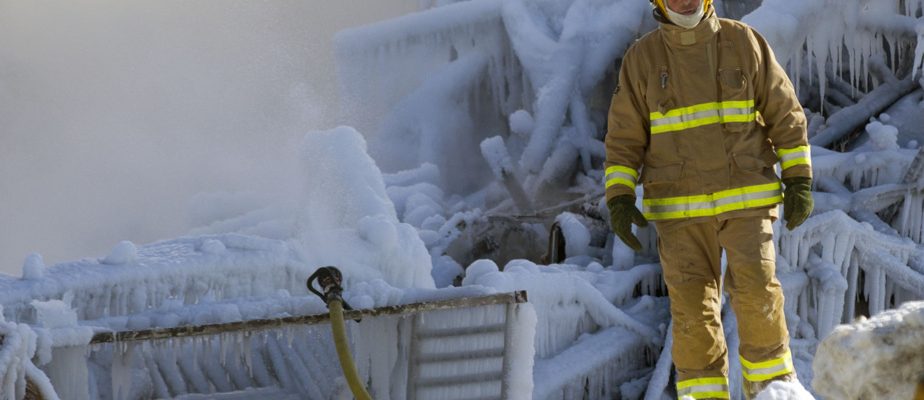Ten years after the L’Isle-Verte tragedy, approximately a quarter of seniors’ residences (RPA) are still struggling to comply with the obligation to install sprinklers while hundreds of others have had to close their doors because , in several cases, they were unable to assume such an investment.
The fire, which occurred on January 23, 2014 at the Résidence du Havre, claimed the lives of 32 elderly people, shocking the entire province. The investigation by coroner Cyrille Delagé, completed by the submission of a voluminous report in January 2015, led the government, among other things, to adopt regulations requiring the installation of sprinklers in all RPAs, with certain exceptions for residences housing less of 10 people.
Small residences damaged
As of December 31, according to data provided to The Canadian Press by the office of the Minister responsible for Seniors, Sonia Bélanger, 353 of the 1,413 RPAs in Quebec had still not installed sprinklers. However, 184 of them have fewer than ten units and could qualify for an exemption if they have complied with other fire safety requirements.
It should be noted, however, that these 353 residences represent only 4.5% of existing RPA units. In other words, it is the small, existing residences that have the most difficulty complying. Larger senior housing complexes with much more robust financial capacity and all residences that have been built in recent years have incorporated the cost of sprinkler systems into the overall construction cost.
The 169 residences that cannot benefit from exemptions “could no longer be compliant on December 2, 2024, and therefore no longer have the right to be in operation,” explains Hans Brouillette, director of public affairs at the Regroupement québécois des residences pour seniors ( RQRA). “The deadline really appears too fast now to hope that everyone will be compliant by then. »
Coroner Delagé had suggested giving residences a five-year deadline to comply. This deadline was eventually to be extended until December 2, 2024. Four versions of an aid program to cover these investments were successively offered.
Clearly undervalued aid
However, the assistance offered severely underestimates the real costs of the required investment and, in cases of RPA of more than 30 units, does not give 100% of this already insufficient assessment.
Mr. Brouillette gives the example of a residence of 20 units located in the region. The owner is therefore entitled to the entire subsidy of $7,000 per unit, or a sum of $140,000. However, the assessment for its installation is $300,000. And in the regions, he specifies, other costs will be added. “The entrepreneur will charge travel, accommodation and meal costs. In other cases, it will be necessary to connect to the municipal water system. We have seen bids for $100,000, but the grant for such a connection is only $40,000. Where will he find the missing $60,000? »
Added to this in recent years are inflation, rising interest rates and labor costs. In addition, not only have insurance premiums seen a significant increase, the installation of sprinklers itself increases the premium due to the risk of leaks in the pipes and consequent water damage in the walls and the ceilings.
Broken business models
“This regulation, more than any other, has caused costs to jump and explode. This is the one that hurts the most and this is the one that sounds the death knell for many residences,” he says.
“These are sudden amounts that arise and completely disrupt your business model and your ability to finance this work. So closures become inevitable and certainly a majority of closures are attributable to this measure. »
He emphasizes that in any industry or service, safety has a price and that when regulations are tightened, the costs will be transferred to the consumer, user or client. “In the case of RPAs, this is not possible for two main reasons: firstly rent control – rent increases are regulated, unlike other sectors of activity where there is no price control – and, secondly, by the ability of seniors to pay. So, yes, we can increase their security, but where do we take the income to pay for this increased security that is imposed on us by regulation? »
The weight of this regulation weighs proportionately much heavier on small residences, explains Hans Brouillette. “The cost must be amortized over a smaller number of units, and therefore rental income. It is obvious that, for small residences, this was a major challenge. »
In addition, owners can hardly turn to financial institutions, he explains. “The bank does not want to finance you because your business model does not provide sufficient cash inflows for repayment. »
“We like to say that lives are priceless, but…”
According to the RQRA, Quebec should have assumed the entire financing of these installations from the start.
“It was the solution. It’s too late now. A thousand seniors’ residences have closed in the last ten years, not all because of sprinklers of course, but it’s significant.
“The government should have and should pay in full. The government is taxpayers’ money. Do we collectively want to have an increased level of security in residences? We all agree that lives are priceless. We like to say that, that lives have no price, but they still have a price when the time comes to measure the ability to pay,” laments Mr. Brouillette.
“Can we afford this cost? Probably yes, if we make the right choices and prioritize in the right way. Collectively, we should have asked ourselves these questions at the time and answered them with a 100% subsidy,” he says in conclusion.
